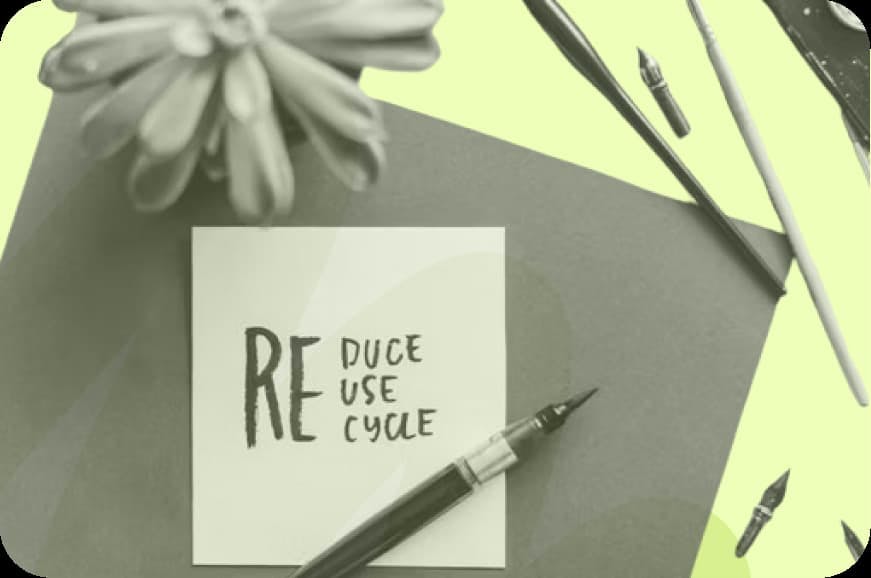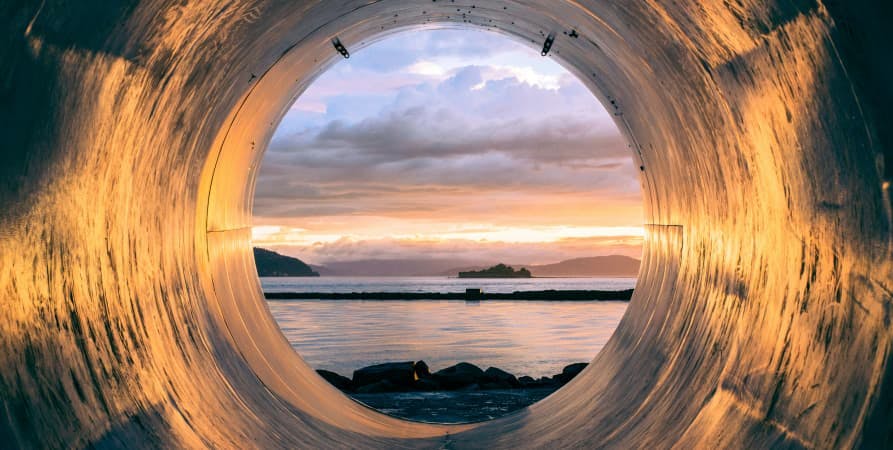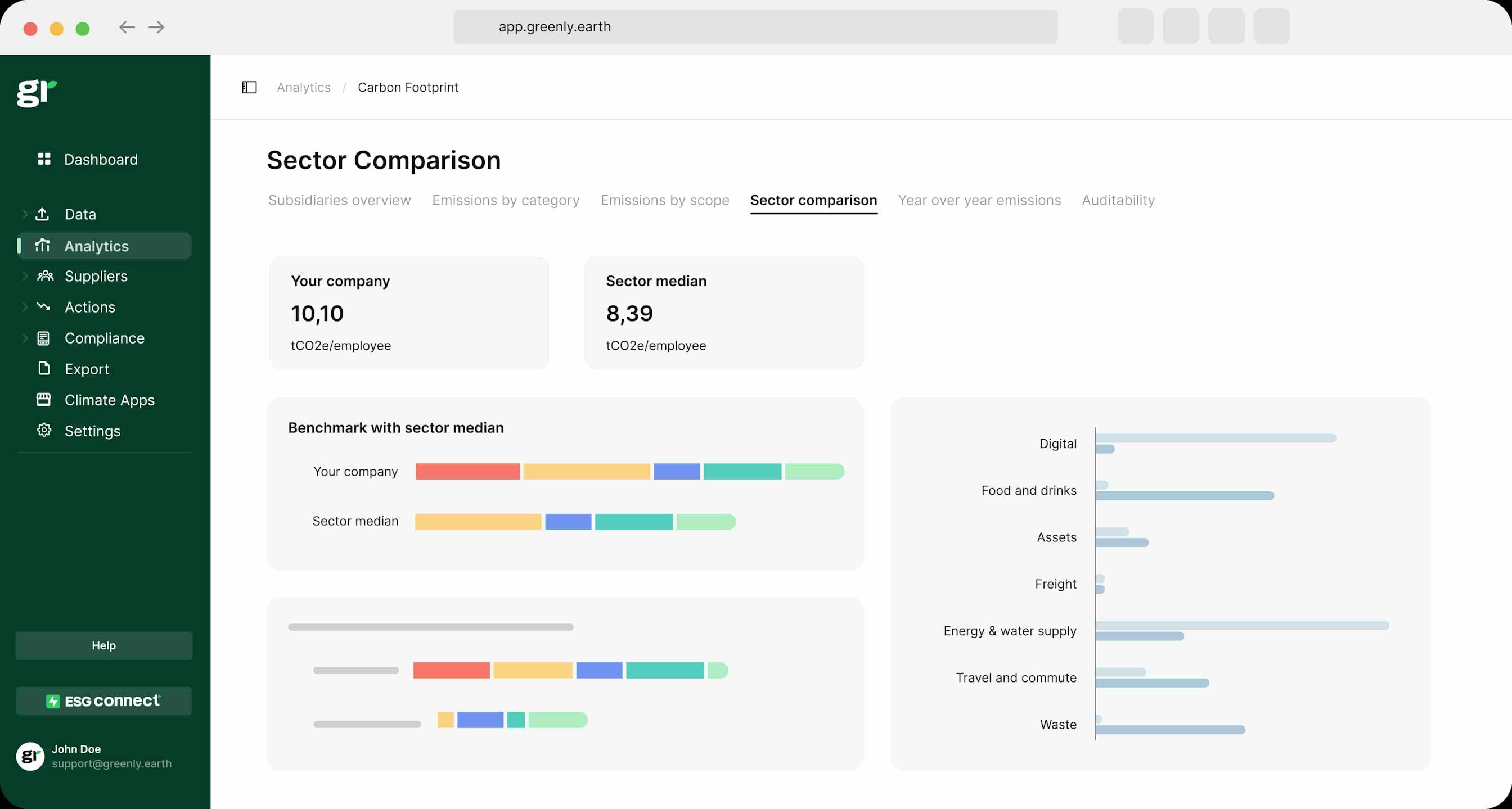
What are the 3 Pillars of Corporate Sustainability?
In this article, we'll explore what the 3 pillars of corporate responsibility are, why they're important, and how businesses can turn them into practical action.
ESG / CSR
Industries



The new economic model of the circular economy is designed to take into account societal and environmental issues. In recent years, overconsumption and overexploitation have increased drastically. As natural resources are dwindling, waste continues to pile up, and the earth's biocapacity is no longer able to meet our needs given our more demanding business models and global economy – our circular economy will continue to grow more important than it was before.
To reverse this trend and thus protect our beloved planet, we need to rethink our production, consumption and waste management methods. This is where a circular economy comes into play.
In this article, we'll discuss what a circular economy is, how it will impact our livelihoods, and how your company can also work to implement this virtuous strategy.
Emerging in the 1970s, the notion of circular economy refers to the sustainable production and consumption of goods as well as services. Based on the model of nature - where nothing is lost and everything is reused - a circular economy is about maximizing the use of all the resources used in the manufacture of a product, to avoid the massive output of electricity, trash, and wastefulness.
Represented by a positive value loop where each step leads to the next, this economic model acts at all stages of a product's life cycle. In addition, consumers and businesses alike, are affected by the implementation of this virtuous economy.
A circular economy advocates for sustainable production, reasoned consumption, and efficient waste management – all while fighting for the well-being of individuals.
This approach is based on several circular economy principles:

In contrast to a circular economy, our current model is based on a so-called linear economy – also known as the "throwaway economy", which consists of extracting, manufacturing, consuming and throwing away.
This extremely polluting model requires the extraction and transformation of resources, mainly raw materials, to manufacture a product that will be used temporarily before ending up in the trash.
These energy-intensive practices are destroying ecosystems, contributing to chemical pollution and releasing enormous amounts of greenhouse gases (GHG).
Additional differences between a circular and linear economy include:
A circular economy aims to move to a virtuous society, we must take into account environmental, economic and social issues.
Thus, this sustainable model is based on seven pillars that cover the entire life cycle of the product or service.
The seven pillars of circular economy are as follows:
This involves taking into account the environmental and social impacts related to the extraction and exploitation of resources. The objective is to limit waste and greenhouse gas emissions. In this sense, it is advisable to favor sustainable resources by selecting suppliers according to ethical and environmental criteria – and the overall circular model.
Ecodesign takes into consideration the product or service throughout its life cycle - from the extraction of resources to its end of life - in order to anticipate and limit its impact on the environment. For example, it involves reducing the use of plastic packaging, limiting transportation, the use of finite resources, rare earth metals, promoting resource efficiency, fighting against programmed obsolescence or improving reparability and recyclability.
This third pillar consists of linking several economic actors in order to optimize the use of resources in a given territory - water, energy, materials, waste, equipment or expertise. This is made possible through a systemic approach and the sharing of resources. In other words, the waste of one company can be a real resource for others.
Note: this pillar is directly inspired by natural ecosystems.
This economic model favors usage over possession. In order to do so, it is necessary to sell services linked to the product rather than the product alone. Thus, the service economy makes it possible to extend the life of a product without consuming more material resources or energy, to create jobs and to encourage mutual aid between individuals. For example, self-service bicycles or carpooling services are based on the service economy. Many cities within the European Union have made self-service bikes and scooters available for use in order to pertain to a more circular economy.
When making a purchase, each consumer - an individual as well as a public or private economic actor - must take into account the environmental and social impacts of a product at each stage of its life. This involves favoring sustainable products by way of reasoned and eco responsible consumption.
Remember to ask the questions: Is the product recyclable? What materials are used? How was it manufactured? Do I really need this product?
To do this, the consumer must favor repairing or giving a second life to unused or broken objects, thanks to reuse, second hand resale, or donation. In addition to acting in favor of the environment and promoting circular business models, it's a good way to save money!
Recycling is a last resort solution to reuse existing raw materials to make new products. The objective is to avoid the polluting extraction of new raw materials by recovering waste. The loop of this virtuous system is closed, since the recycled resources allow sustainable supply (the first pillar).
Beware, many waste isn't recyclable yet (some plastics in particular) due to outdated recycling practices.

The seven pillars of a circular economy are divided into three action areas:
The EU defines a circular economy as a system where the value of products and services are not discarded or meant to be disposed of immediately – seeking to reuse, repair, re-manufacture, or recycle items as many times as possible.
“A circular economy compliments several of the other climate goals depicted on behalf of the EU, such as to work towards greater sustainable development, reduce emissions, encourage energy savings, and protect biodiversity.”
The EU has been working on the development of its circular economy since its first plan adopted back in 2015, with adjustments having been made in 2018 to further improve current waste management measures – such as by increasing targets for recycling and mitigating food waste or marine litter.
Individual countries in the EU, such as France, have also worked to develop their own circular economy. For instance, devised on February 10, 2020 and effective January 1, 2022, the AGEC in France created anti-waste law for a circular economy is broken down into 5 main areas:
Note: the law on the energy transition for green growth of August 18, 2015 mentions for the first time the concept of circular economy. Therefore, the transition to a virtuous economy has become a national objective and is one of the 3 pillars of sustainable development.
In order to reduce the amount of waste and to encourage businesses and consumers to start an eco-friendly approach, several measures related to the anti-waste law are coming:
💡Good to know: each year, new bans are introduced. For example, since 2021, certain disposable plastic products such as straws, plastic stirrers, plastic bags and cup lids are banned. In this sense, since January 1, 2022, toys offered to children as part of a meal, over-wrapping of fruits and vegetables weighing less than 1.5 kg or packaging of magazines and advertisements to be sent are also prohibited.
Being anchored in a more environmentally friendly business model is a real asset for companies. As such, a circular economy is a non-negligible lever that falls within the framework of corporate social responsibility (CSR). Here are the main benefits.
Procurement costs and costs related to the treatment of waste are reduced. By reusing one's own resources, utilizing recycling and the absence of transport – a company seeking to improve via a circular economy benefits from cheaper raw materials. This reduces production costs and increases competitiveness and further helps to transition to a circular economy.
Even better, since it is no longer dependent on the raw materials produced by the earth, the company has less risk of suffering a shortage and, consequently, of having to stop its activity abruptly. The circular economy thus makes it possible to limit financial risks and to consolidate one's business.
Engaging in a circular approach makes it possible to respond to current environmental issues and consumer concerns. Highlighting one's commitments to the climate - and keeping them - is a real asset for building customer loyalty and improving brand awareness.
Be careful not to fall into the trap of greenwashing! As a reminder, this communication strategy aims to deceive consumers by making them falsely believe that the company in question has adopted environmentally responsible measures.
By communicating on one's commitments and opting for respectful production methods, a company positions itself as a forerunner in its field while the others are still governed by the linear economy. In fact, it can enter new markets and be one step ahead of its competitors.
While still not heavily regulated, a circular economy is nevertheless already subject to some constraints - and this is only the beginning! In order to fight against global warming, we need to act effectively and quickly on our CO2 emissions.
To avoid being taken by surprise, it is recommended to improve the production, treatment, management and use of resources to anticipate future regulations. Trying to respond to these ecological challenges now allows to be more prepared for future legislative changes.
All stakeholders - employees, partners, suppliers and customers - are affected by the implementation of a circular economy strategy. This helps reinforce their commitment to a meaningful project.
💡 Did you know? According to a study by the France Stratégie institute, a circular economy would create 800,000 additional jobs in France.
If reading this article about a circular economy has inspired you to consider your company’s own carbon footprint, Greenly can help.
At Greenly we can help you to assess your company’s carbon footprint, and then give you the tools you need to cut down on emissions. We offer a free demo for you to better understand our platform and all that it has to offer – including assistance with boosting supplier engagement, personalized assistance, and new ways to involve your employees.
Learn more about Greenly’s carbon management platform here.
